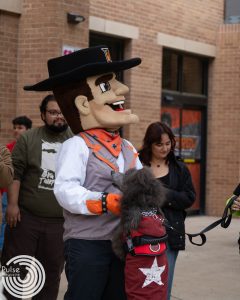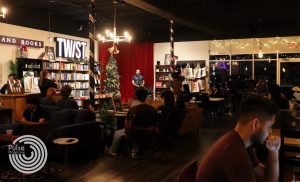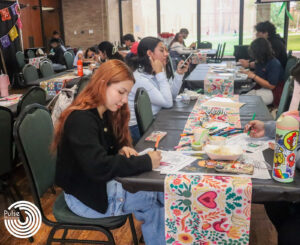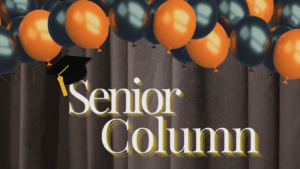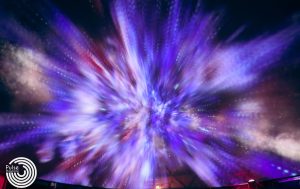A Continuous Change
Amid the global pandemic, we have entered a cycle of submerging into murkiness and floating around in circles, all with hopes to come out of this transitional period cleansed and transformed. As we dive deeper into uncharted waters, it is easy to wonder what will happen next and how we are going to continue adjusting to a new normal.
Communities, organizations, and individuals face their struggles of uncertainty, weaving around how to respond mentally and emotionally to the COVID-19 outbreak. Artistic expression is one way to create an environment of comfort and ease. The arts, although often displayed through gallery exhibitions and performances, have also been affected by the global pandemic. Now, one’s way of escape from a quasi-dystopian society through means of artistic expression is accompanied by discouragement and dismay.
NuQueer & Co.
NuQueer & Co. is a performance art company combining elements of queer-based creation with an alternative twist. Heavily influenced by drag queen performance, the company offers new and coming artists the opportunity to broaden their creativity and explore their talent, while bringing their fantasy to the stage. A typical NuQueer performance radiates an energetic and interactive audience, lively bass-thumping music, and technicolor lights strobing across venue walls. Due to complications heightened by COVID-19, NuQueer faces a 180-degree turn, figuring out how to be expressive and engaging despite temporarily closed venues.
Michael Villarreal, co-owner of NuQueer & Co. had big ideas and plans to host even larger events at larger venues before the pandemic worsened.
“Because of the pandemic, it was kind of risky to even think about doing those things,” Villarreal said.
Villarreal has experienced a transitional period from in-person to virtual performances as co-owner of NuQueer and as a drag performer. Villarreal, under the drag persona of Lovecraft, acknowledges the changes surrounding performance art with motivation.
“When you don’t have a set schedule or set events to go to, I have to push myself to be more creative and put myself out there because you end up being your own motivator… but in a positive way,” Villarreal said.
Villarreal believes that performance art is about creating your own illusion or fantasy, like creating an image in your mind and bringing it to life. Villarreal has been performing under Lovecraft for five years. The drag name Lovecraft is a homage to American writer H.P. Lovecraft, known for his horror science-fiction works. The drag name also derives from being the opposite of witchcraft, finding inspiration from cyberculture, punk music, feminism, and aliens.
The drag artist creates his custom looks for Lovecraft by sketching out designs, choosing the perfect fabric, working on the sewing machine, and creating a proud and mesmerizing look to perform in.
Considerate of the times, NuQueer has no plans of having in-person events. The company had to think around the situation as opposed to entirely straying away from it. In June, NuQueer wanted to figure out how to celebrate pride month. Also, during this time, America started to see an increase in protests in tribute to George Floyd’s death. With the starting momentum for racial equality, NuQueer decided to host its first virtual fundraiser event to support the intersectionality of Black Lives Matter and the LGBTQ+ community.
“It was at a time where George Floyd had just – we all had just found out about that, and it was impacting America instantly,” Villarreal said.
NuQueer’s event titled O.U.T. focused on helping raise money and awareness for the Black queer community. Unsure of how to interact with an online audience, NuQueer wanted to figure out a way to mimic an in-person drag performance and keep the interaction going.
“Through online, you pretty much only have your keyboard, and you have a chat,” Villarreal said. “It’s kind of difficult during this time to figure out exactly where a lot of people are right now and how to keep them interested.”
One reason why NuQueer was created was for the love of thrill and passion for live events. The core hurdle to overcome has been feeding off people’s energy in the same way but a different environment.
“We love the feeling of having a whole bunch of people around and having a good time with the music and the lights; seeing people out there on the stage, announcing their names, seeing them smile and then come to us after the show,” Villarreal said.
For O.U.T., Villarreal was only able to see numbers, likes, comments, and reactions via Facebook Live. This is the new normal of engagement for NuQueer. From feeding off a common surge of energy and adrenaline in-person to now sitting at home and recording oneself in front of the screen is not a familiar drag queen scene.
“It’s difficult to engage as a performer,” Villarreal said. “How do you express yourself in front of a computer, phone, or the internet? I wouldn’t say it’s not as rewarding, but it’s a very different kind of experience.”
Getting involved through virtual means is just the beginning of NuQueer. Their first virtual production raised over $700. These funds were donated straight to the Homeless Black Trans Women Fund. Finding a niche between the drag world and the virtual world and building an online platform is what NuQueer co-owners want to focus on as they progress forward.
“We’re taking full advantage of this online world now so that when we’re able to go back there, we have that presence and people can come to us and want to work with us, Villarreal said. “I feel like a lot of us are going to come out of this even stronger.”
Ballet Folklorico UTRGV
Recognized at a national and international level, Ballet Folklórico UTRGV personifies a visually appealing and cultural experience to the public through finely sharpened dance technique and intricate performance apparel. The Ballet has been under the direction of Miguel Pena, a dance lecture, since 2015. He anticipated this year to be one of the busiest years since taking charge of the group. Due to COVID-19, the dance company continues to face challenges.
“I canceled everything in March,” Pena said. “Throughout the year, we had about 60-70 performances, in one single year. That number has been increasing.”
Every year, the Ballet has a season of big shows, which they spend months of practice perfecting every count, every step, every facial expression, and every detail. These shows – Alegría, Ouroboros, and Leyendas, are some of the group’s biggest shows of the year. Unaware of how to plan practices for the 2020-2021 school year, Pena is certain that all the events planned for Fall 2020 are going to be canceled face to face. Pena plans to start practicing with the students to do the big performances in 2021.
“We don’t know what’s going to happen if we can meet face to face or with masks,” Pena said. Distance is a problem because almost everything we do in Folklórico is with a partner, touching.”
To overcome these challenges, Pena continues doing his research. He reached out to other big dance companies to see how they are taking precautions and handling practices. Transitioning to a new academic school year, holding auditions was also a concern for the Ballet director.
The Ballet instructor said he asked those who auditioned to send him videos. Analyzing dance skills through virtual means was not convincing enough to announce who would make it into the company or not. The next alternative was to have a face-to-face audition with the same dancers to finalize details and come to a decision on who and who did not make the team. These auditions were planned carefully to follow the protocol and ensure safety.
“The first priority is the safety of everyone, especially the students,” Pena said.
Folklórico dancers have specific pieces to wear such as beautifully designed skirts and special shoes while performing that require a special floor to practice on. Otherwise, dancers can cause damage to their knees and potentially harm themselves.
“It would be very difficult if I received requests [to borrow equipment]. I can lend those skirts, but I don’t want them to be [exchanged] with other students,” Pena said.
The Ballet has 25-30 female dances, with limitations between 17-20 different dresses for a single dance. This requires sharing some of the costumes.
“That’s another reason why we can’t perform yet until we find a vaccine or any way to make this happen,” Pena said.
Until then, Pena is learning how to take on these obstacles and tells his students to take this pandemic as a triumph of growth.
“I always tell my students we can learn something from everyone and everything. I think one of the things is that we are learning to appreciate the human contact, especially in dance,” Pena said.
One of the goals Pena has for the Ballet and his students to continue producing professional dancers. Additionally, one important step the dance program at UTRGV took was adding a new BFA concentration in dance with a Mexican folk concentration. No other institution in the nation offers this concentration. The Mexican folk concentration will be introduced starting Fall 2020.
“We are trying our best to make this work. Fall 2020 is going to be a very difficult semester for everyone. We are going to be adjusting for a new normal way of teaching and performing. Everyone is working hard to adjust to this way of life.”
*Victoria Mena contributed to the reporting for this story.

